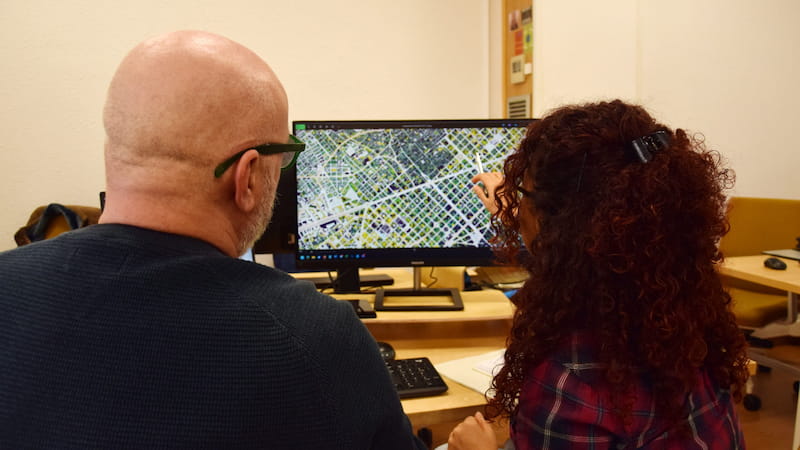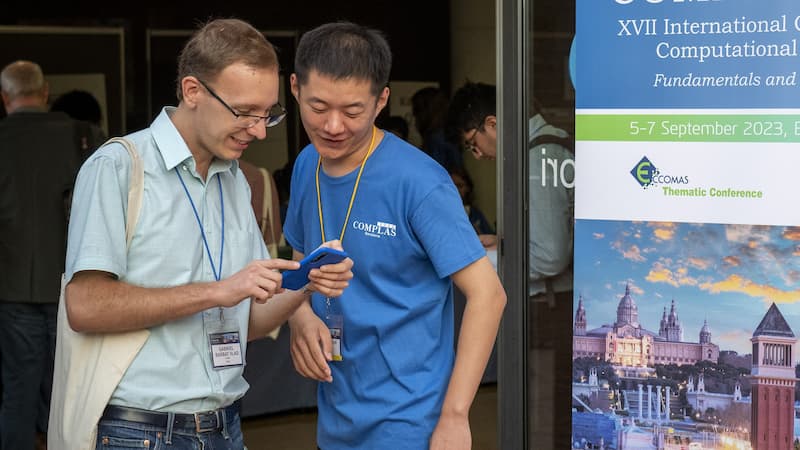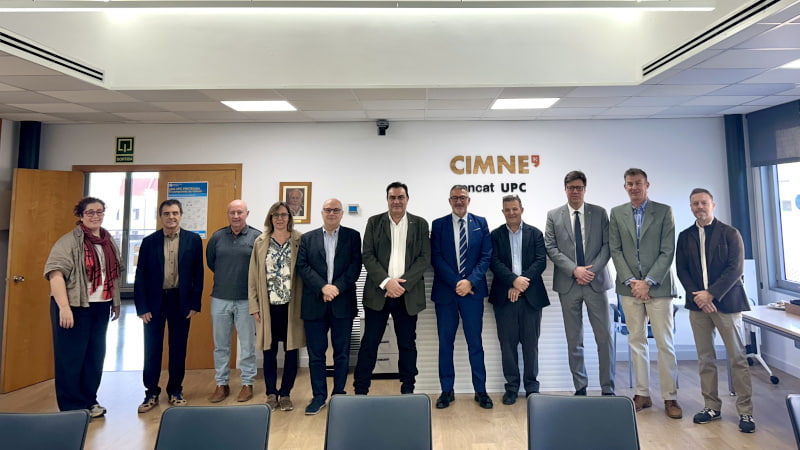
On 28 October, Professor Michael Ortiz gave a seminar entitled “Science Meets Data: Scientific Computing in the Age of Artificial Intelligence” at the Palau Robert in Barcelona, to mark his appointment as holder of the UNESCO Chair in Numerical Methods in Engineering at Polytechnic University of Catalonia – BarcelonaTech (UPC) and CIMNE.
Professor Ortiz has had a distinguished career at institutions such as Caltech and Stanford University, and is an internationally recognised figure in the field of computational mechanics. The event addressed the scientific paradigm shift that is transforming research and engineering today: the revolution of data and artificial intelligence.
The UNESCO Chair in Numerical Methods in Engineering: a global pioneer
The UNESCO Chair in Numerical Methods in Engineering at UPC and CIMNE was established in 1989, becoming the first UNESCO Chair in the world devoted to advancing numerical methods in engineering. Its mission is to tackle scientific and technological challenges in engineering through the development and application of advanced computational methods, with a strong emphasis on technical education and knowledge dissemination, particularly in developing countries.
Professor Michael Ortiz, who holds a PhD from the University of California, Berkeley, is now the current Chairholder. He has made key contributions to materials modelling, fracture mechanics, multiscale methods, and quantum computational mechanics. At CIMNE, he leads pioneering projects in data-enriched simulation and quantum mechanics, pushing the boundaries of numerical methods in engineering on a global scale.

Prof. Michael Ortiz with CIMNE team during the UNESCO chair seminar
A new data horizon
We live in the age of data. From the political to the natural sciences, data are flooding every discipline and growing at an unprecedented pace. The difference between today’s world and that of just a decade ago lies in the sheer amount of data generated daily. The Internet, social networks, and cloud computing are all catalysts for this exponential growth – and how we manage this deluge is crucial to understanding it. Algorithms, statistics and machine learning make it possible to uncover patterns or predict behaviours that are invaluable in fields as diverse as marketing, politics and economics.
Science, too, cannot escape the data revolution – but its relationship with data is a special one, Professor Ortiz notes. The accumulation of information risks turning into mere noise unless science engages with it: data capture the observable world, but they need structure, interpretation, and physical principles to make sense. In fact, disciplines that once suffered from data scarcity are now faced with overabundance. In particular, solid mechanics has evolved from an empirical discipline into one increasingly rich in data and grounded in physics. This revolution raises fundamental questions about how to harness data for discovery, prediction, and materials design.
In mechanics, we work with equations, models, and laws that describe fundamental physical relationships – yet nonlinear problems demand a deeper understanding of material behaviour. Here, data do not replace physics; they complement it. They enable us to address the behaviour of complex materials and systems that cannot be described through classical approaches. Data-driven science combines conservation laws with experimental observations to produce more realistic predictions.
The quantum shake
Quantum mechanics and quantum computing open up an entirely new scientific paradigm. For decades, quantum mechanics has been a deeply theoretical discipline of extraordinary precision and complexity. Today, however, it has been transformed through computing and numerical simulation, as Professor Ortiz points out. Innovations in quantum computational mechanics now make it possible to model the behaviour of materials and structures at atomic scales with previously unimaginable detail.
Qubits and quantum entanglement allow information to be processed with exponential computational power: quantum computers can simulate problems that would take classical computers thousands of years. This new frontier is especially relevant to fields such as materials mechanics and computational engineering, where predicting a system’s behaviour often depends on underlying quantum processes. Through hybrid techniques that combine classical simulation, experimental data and quantum computation, researchers can now explore materials and phenomena with unprecedented accuracy.
The challenges of tomorrow’s science
According to Professor Ortiz, the convergence of these two revolutions – the data revolution and the quantum revolution – is no coincidence. Both point towards a new way of doing science: more integrated, predictive, and closer to physical reality. Data provides the vast empirical evidence, while quantum theory offers the fundamental language that explains why data behave as they do.
Both are essential for building a science capable of understanding and designing the world with radical precision – and the science of the future must learn to balance them. Artificial intelligence and machine learning are immensely powerful tools, yet they must not obscure the ultimate goal of science: reasoning and understanding.
Through the UNESCO Chair, CIMNE reinforces its commitment to research that unites scientific rigour, innovation and global impact, helping to shape not only the science but also the scientists of the future.








